Certainly as a director and a little less so as a star, Clint Eastwood has worked in just about every genre there is. One glaring exception is horror, or so it would seem. HIGH PLAINS DRIFTER comes pretty damn close. It’s a genre rope-a-dope. You see the star of THE GOOD THE BAD & THE UGLY and he’s riding a horse and carrying a six-shooter, so you think you know what kind of a movie you’re expecting. And then you get hit with something else entirely, but not right away.

Here I find myself in the unfortunate position of spoiling a movie early on simply by describing it in terms of the horror genre – since for a long stretch, the story of HIGH PLAINS DRIFTER would not lead one to conclude it should be filed anywhere other than the Westerns shelf of the library.
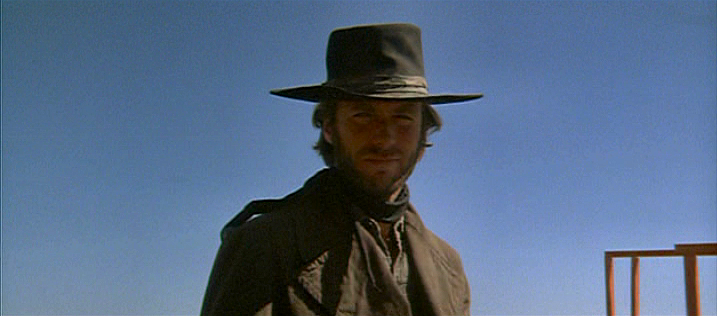
But, at the very least, Clint Eastwood as director and star uses some elements of the ghost-story genre in the construction of HIGH PLAINS DRIFTER. The unnamed gunslinger appears out of the haze of the frontier heat on his way into a town that he eventually paints blood-red (literally) and re-names “Hell,” and the wailing score by Dee Barton of PLAY MISTY FOR ME is at all times more horror-movie than Morricone.
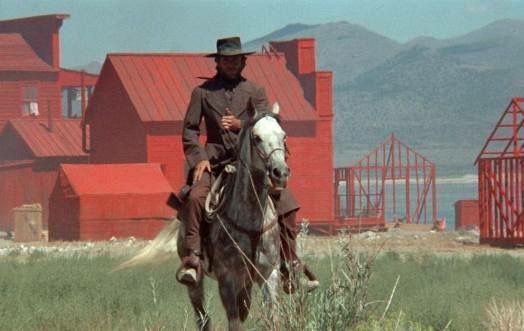
Clint’s second film as director after the aforementioned PLAY MISTY FOR ME, HIGH PLAINS DRIFTER was heavily influenced by the styles of Clint’s mentors Don Siegel and Sergio Leone. Unlike PLAY MISTY FOR ME, which was a then-contemporary thriller, HIGH PLAINS DRIFTER would have seemed like a return to familiar genre terrain for Eastwood. But this was no usual shoot-’em-up. It was the first of many sly and bold deconstructions of his own “nameless gunfighter” persona – this is no hero, but a ruthless avenging angel. And maybe “angel” isn’t remotely the right term.
Actually… it definitely isn’t.
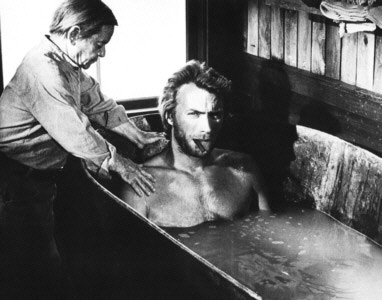
Written by Ernest Tidyman, creator of SHAFT, and moodily lensed by Eastwood regular DP Bruce Surtees, HIGH PLAINS DRIFTER lets you know almost immediately that this isn’t Gary Cooper territory. The townspeople of Lago are nervous about a trio of murderous outlaws, led by Stacey Bridges (played by Geoffrey Lewis), who once terrorized the place and are rumored to be on the way to do it again. So when a mysterious stranger, in a familiar tall, dark and handsome form, rides in from the desert and shoots down some nasty customers, it would seem he’s the answer to Lago’s prayers.

But when a well-dressed blond lady tries to meet-cute with the stranger by bumping into him, he forces her into a barn and not very ambiguously forces himself on her. This is within the first fifteen minutes of the film. It’s startling and upsetting, and while there are indications the woman seems to enjoy it, that only makes it more difficult to process. Our movie’s hero has done one of the worst things you can do to anyone to a seemingly innocent person. And we’re still supposed to root for this guy? Can you imagine the Salon thinkpieces if this film were to come out today?

Of course, as it turns out, nobody in Lago is innocent or pure. But we don’t know that at the time of the sexual assault. And even once the truth is revealed, this moment still doesn’t sit right. Nobody deserves such a violation, and even if logic were perverted and contorted enough to make rape seem justifiable, does that make things better? Is anything really resolved? And why are we watching in the first place?
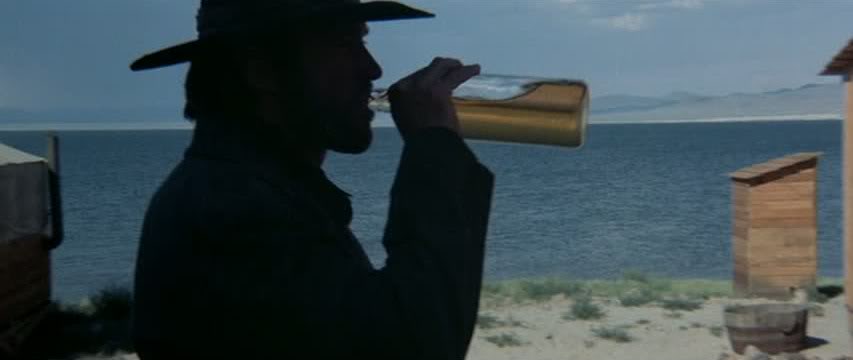
Twenty years later, the Academy Of Motion Picture Arts And Science awarded Clint’s film UNFORGIVEN for its canny deconstruction of the star’s own persona and that of basically every American action hero of the past century. But — not to take anything away from UNFORGIVEN, which is a favorite — HIGH PLAINS DRIFTER proves Clint had been doing that all along. The gulf between what an audience expected from Clint in 1973, when he first rides into this movie on a white horse, and then what he proceeds to do in short order, is unfathomable. It’s still shocking today. No action star before or since had been so daring with their onscreen persona. No movie star period would risk such a vicious reversal of expectations.

Like HIGH NOON, this story is about a lone gunfighter preparing to face off against three outlaws in a frontier town. Like THE MAGNIFICENT SEVEN, the story finds a town hiring a mercenary to teach them to fight against invaders. But in HIGH PLAINS DRIFTER, the hero abuses the authority he’s given: He assaults a woman, drinks up the town’s booze, appoints a little person (Billy Curtis, who is excellent in the movie) the town sheriff, defaces the scenery, and ultimately abandons the people in their supposed time of need. He’s an unchecked anarchist at best.
The Western is maybe the single genre where American audiences most expect our heroes to be heroes. Clint Eastwood used the Western to make us ask ourselves what that means.
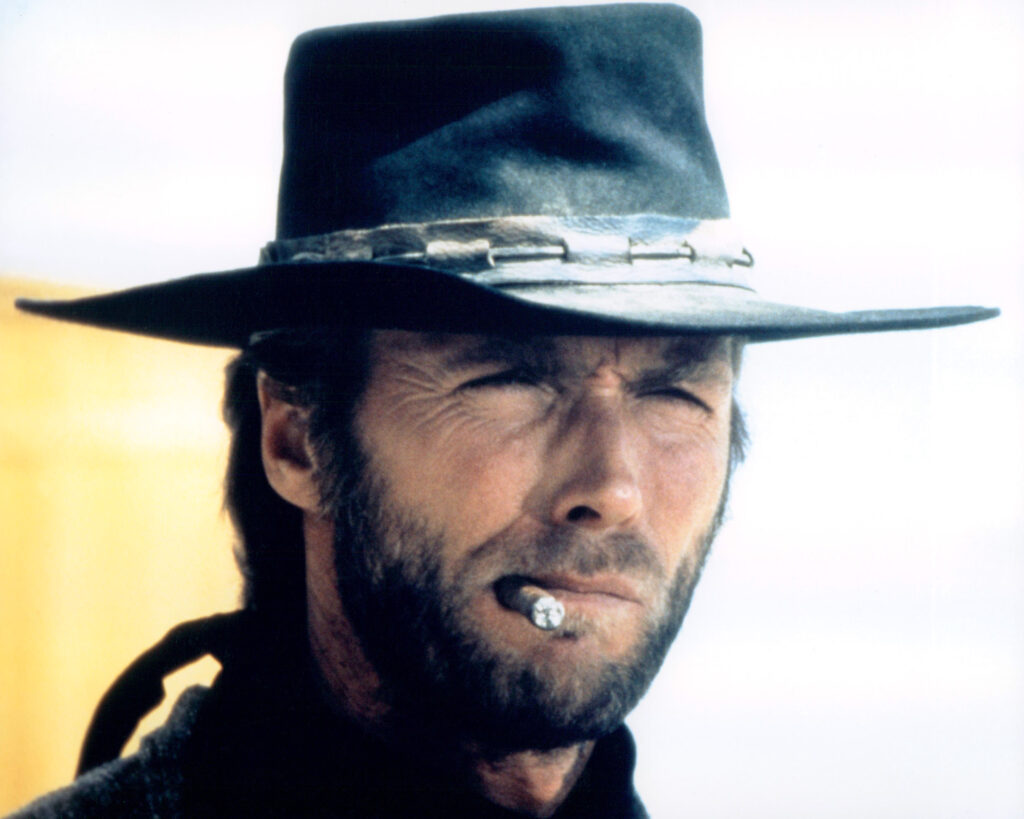
– JON ABRAMS.
- [THE BIG QUESTION] WHAT’S YOUR FAVORITE FEMALE ENSEMBLE IN MOVIES? - July 22, 2016
- [IN THEATERS NOW] THE BOY (2016) - January 24, 2016
- Cult Movie Mania Releases Lucio Fulci Limited Edition VHS Sets - January 5, 2016
Tags: 31 flavors of horror, Billy Curtis, Bruce Surtees, clint eastwood, Dee Barton, Ernest Tidyman, geoffrey lewis, Ghost Stories, Little People, Westerns



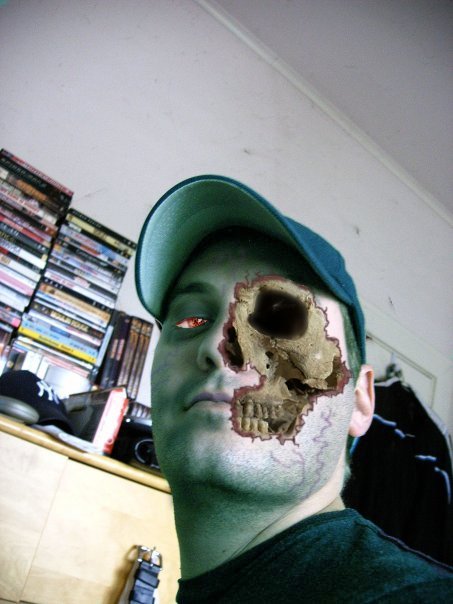




No Comments